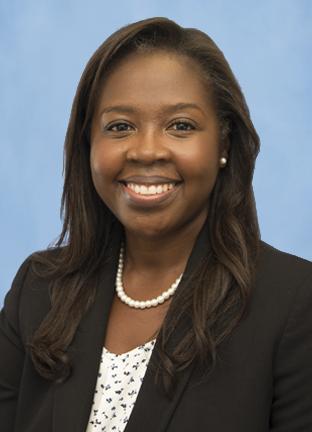Autonomy in the operating room separates the learner from the doer, and it develops when practice, confidence and trust combine to give surgical residents the ability to perform an operation independently. What does that autonomy look like among surgical residents of different perceived races—and how does it affect their training?
Gifty Kwakye, M.D. M.P.H., a clinical associate professor for surgery and the surgery clerkship director, was intrigued by the question. As a Black trainee, Kwakye felt the climb to gain trust was sometimes steep. As current faculty, she knows how hard it can be to grant trust.
“Sometimes you’re meeting the resident for the first time when you’re operating. Or sometimes you haven’t had a chance to get to know them outside of the working environment. You’re across the table and it’s a high stakes situation. How likely are you to hand the keys over when you’ve just had a few moments to talk?”
What you see is what you respond to
To try to understand whether race is a factor in surgical residents achieving autonomy, Kwakye and a team of medical students and faculty analyzed rating data for general surgery residents from the Society for Improving Medical Professional Learning (SIMPL).
SIMPL’s app-based evaluation tool assesses autonomy through surveys consisting of three questions and open-ended feedback. Both trainees and attendings take the surveys after completing a procedure. (Brian George, M.D., M.A., an associate professor of surgery at Michigan Medicine, is the executive director of The Society for Improving Medical Professional Learning.)
The data set included 885 residents rated by 1,392 faculty after participating in 46,645 procedures at multiple programs. The team coded resident race by using publicly available directory data. Self-reported data on race was not available, but the process of assigning race based on the available data aligned with the study’s aim, according to Kwakye.
“If you’re thinking about that immediate impression most people form, they form that impression off of external cues, not how you identify,” Kwakye said. Since race is in many ways a social construct, assumptions of racial identity play an important role in discrimination, Kwakye said. Mimicking the process by which people make latent assumptions about trainees’ ethnic backgrounds using external physical characteristics was key to investigating the research question.
The majority (68%) of ratings were of trainees perceived as White, with 4% of ratings of trainees perceived as African American or Black and 5% of those coded perceived as Hispanic or Latinx. Using a statistical model, the team estimated the adjusted probability of a resident being granted meaningful autonomy by a faculty, both overall and at the end of each PGY level.
On average, trainees perceived as White received similar autonomy as those trainees perceived as non-White. Things looked different when isolating groups by training year; residents perceived to be African American, Black or Hispanic or Latinx in their second year of training had less autonomy than residents perceived to be White. There was no significant gap in autonomy ratings between groups after PGY2.
The findings were outlined in a research letter in JAMA Surgery.
Trust is earned, but not necessarily at a consistent rate
That lack of autonomy can have a compounding effect on training, according to Kwakye. She described a scenario in which an attending surgeon might assume a PGY3 resident would have done a procedure, when in fact they might have only observed it.
“It builds more mistrust and it means having to do a lot of work to make up that skillset,” Kwakye said.
That “catchup effect” might be visible in the data from the study, when after PGY2, the autonomy ratings are more aligned for all groups. Building personal connections over time can also play a role in building trust, and therefore autonomy.
“The more you get to know about people, the more shared experiences you have. It’s less about those immediate external cues because you've taken the time to dig a little bit deeper. By the time the resident becomes a chief resident, they’ve gained respect and access because of time spent in rank. You trust them because of that,” Kwakye said.
Data on race were not available for faculty members in the study, and it’s something Kwakye would like to see in a future study, along with self-identifying race among residents. What is known is that non-White surgeons make up a small portion of faculty at surgery training programs generally, and that people tend to grant trust more readily to those within their own in-groups, Kwayke said.
She said she’d like to know whether the autonomy trend would be similar today given that programs have attempted to diversify their programs, and that there’s now more cultural awareness of structural racism.
There is also more to explore in terms of the implications of such autonomy gaps. How do those gaps influence speciality decisions, and how comfortably are trainees practicing post-fellowship?
Like getting to know people requires digging deeper, so does understanding this issue.
“This is just the tip of the iceberg,” Kwakye said.
##
By Colleen Stone


